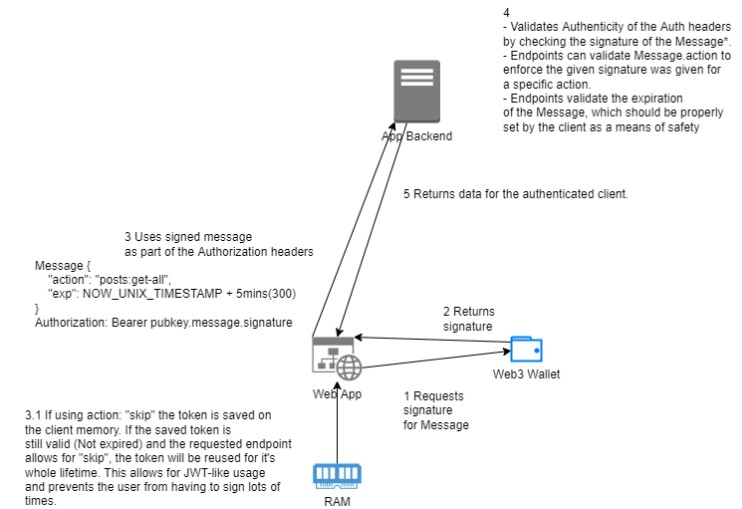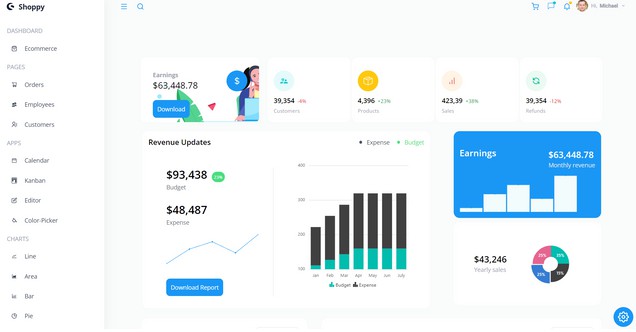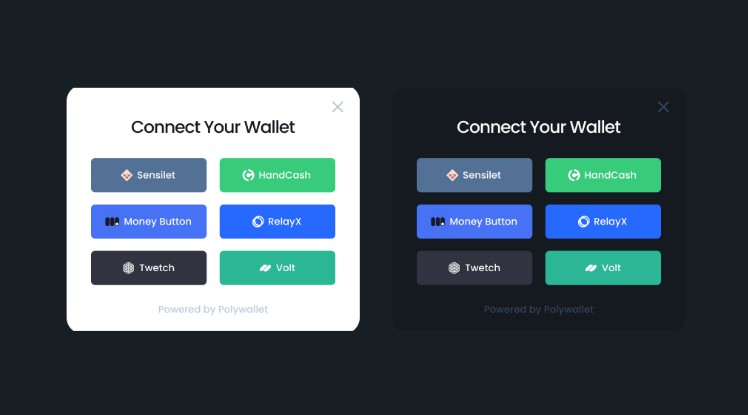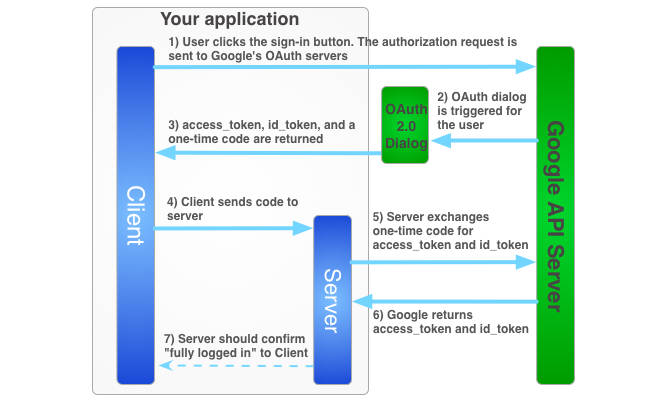Solana Wallet Auth: A FullStack example
This example uses Solana’s wallet adapter to sign messages and verifies their signatures on the backend, allowing for a lean way to authenticate users without the need for web2 credentials like email/password combinations or social providers, in this scenario all you have to do is connect your wallet and sign interaction messages to be properly authenticated.
How to run
Backend
cd wallet-backend
yarn && yarn dev
Frontend
cd wallet-frontend
yarn && yarn dev
Technology stack for this example
Most of the technologies used in this example are production ready, however, be sure to check them and remember to switch LowDB for a proper database.
Backend
- NodeJS, Express, Typescript, LowDB (Local JSON file, only for testing), TweetNaCL.
- GraphQL example coming soon.
Frontend
- React, Typescript, Vite, Solana-Wallet-Adapter, Tailwind.
Notes
Validation on the backend happens using the library tweetnacl,
but some additional checks were added, like action and message expiration.
The files you want to check are:
@wallet-backend/src/middleware/web3Auth.ts@wallet-frontend/src/lib/api/web3Posts.ts
Where web3Auth.ts defines a simple, yet powerful authorization middleware that
extracts the authorization headers and validates, then parses the message to perform
some additional checks and the web3Posts.ts axios client exemplifies a good set
of UX patterns, like reusing a token for "skip" requests (Requests that skip action checks).
Here’s a diagram of simplified is this authentication method
Reference read
- Solana Wallet Adapter – How can I sign and verify messages?
- Phantom Wallet – Signing a Message
- TweetNaCL – Verfiy message signature
- Improve user authentication with Web3 wallets
- Build a Web3 authentication flow with React, Ether.js, and Ceramic






